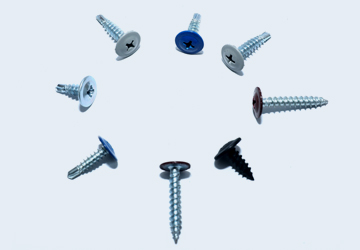The self-tapping lock screw is a coarse thread common t […]
The self-tapping lock screw is a coarse thread common thread series, and the screw thread specification is M3~M12. The screw of the self-tapping locking screw has a thread with an arc-shaped triangular cross-section. The screw is hardened on the surface and can be screwed into a pre-made hole (made by drilling, punching or die-casting) of black or non-ferrous materials, and formed by extrusion internal thread. When not all threads are made on the screw, the unthreaded rod can be made into a cylindrical or triangular shape with a diameter equal to or smaller than the diameter of the circumscribed circle.
Self-tapping locking screws have low screwing torque and high locking performance. Self-tapping locking screws are divided into five categories according to national standards: cross recessed pan head (GB/T6560), cross recessed countersunk head (GB/T6561), cross recessed countersunk head (GB/T6562), hexagon head (GB/T6563) ), hexagonal flower-shaped cylinder head (GB/T6564) self-tapping locking screws.
Since self-tapping locking screws are required to have the performance of self-tapping low-carbon steel plates, they require high-hardness surfaces to achieve cutting and extrusion capabilities. At the same time, there must be sufficient heart strength and toughness to prevent distortion or twisting during work. The carburizing of this type of screw belongs to shallow carburizing. Therefore, mesh belt furnaces or continuous production lines of shaking hearth furnaces are mostly used.
Self-tapping locking screws, whether low-carbon steel, medium-carbon steel, or medium-carbon alloy steel, must be carburized, quenched and tempered. If the depth of the hardened layer is too shallow, the surface hardness and torsion strength are insufficient. When screwing in, the thread may deform or slip; on the contrary, if the hardened layer is too deep, it is easy to become brittle, either turning around or breaking. The sensitivity to hydrogen embrittlement is also high, and this trend is closely related to the tempering conditions and materials. The self-tapping screw has a wide range of carburizing effective hardened layer depth specified in the standard. The purpose, size, material and tempering conditions of the self-tapping screw should be considered, and the target value should be appropriately increased or decreased within the specified range.
